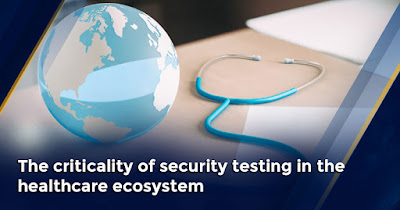With quality being considered the prime differentiator for a software product to be accepted in the market, stakeholders (management, developers, testers, and operations) have their task cut out. They not only have to ensure the quality of the product at the time of delivery but also keep it updated even while the product is being used by the end-users. This means pursuing a cycle of continuous improvement and delivery where everyone in the ecosystem needs to be accountable for maintaining the quality of the product. This is where DevOps kicks in with its focus on reducing the time between developing a software product and the business realizing its benefits.
This calls for increased collaboration and communication between teams, namely, development (those who develop and test the product) and IT operations (those who operate the product). In such scheme of things, Continuous Integration (CI) and Continuous Delivery (CD) are the vital pillars. Thus, with DevOps, business enterprises aim at the rapid and consistent delivery of high-quality products. These products, in turn, are expected to offer higher customer satisfaction, thereby guaranteeing the success of the product in the market. And given the popularity of DevOps, a few variants have emerged, with QAOps being one of them. In a QAOps framework, QA (Quality Assurance) is integrated into the CI/CD pipeline instead of existing as a silo-based process divorced from development and operations.
What is QAOps?
Since Quality Assurance (QA) plays a critical role in the development and delivery of a software application, it is logical that QA and Operations collaborate as a business practice. Thus, QAOps focuses on improving the software delivery workflow and making it stable, robust, secure, and faster. In short, it takes the critical aspects of continuous testing in DevOps such as CI and CD, and brings the siloed teams together.
Why QAOps?
Although less popular than DevOps, QAOps is fast emerging as a crucial methodology to pursue in the delivery lifecycle. In fact, in QAOps, the QA team holds a pride of place that a development team holds in the SDLC. The benefits of employing QAOps in DevOps implementation are as follows:
Better quality: With QA being integrated into the delivery workflow, the final product is of higher quality than what it would have been if traditional methodology had been used. As an integral part of the CI/CD workflow where extensive automation is used, faster results are achieved leading to higher customer satisfaction.
Better productivity: With QA getting much more involved in the development lifecycle than before, there are frequent interactions with other teams. This ensures the QA team is valued more in the organization resulting in boosting their confidence and productivity.
Increased skill level: When the QA team works with other teams (development and operations) as part of DevOps software testing, it allows them to expand their horizon and increase their skill level.
Better customer experience: As QAOps incorporates continuous testing, there is a higher degree of quality, stability, and reliability of the product. This ensures superior experiences for the end customers.
What are the differences between DevOps and QAOps?
Although QAOps is a derivative of DevOps, there are a few differences between the two.
Quality at the core: In DevOps testing services, the collaboration is mainly between the development and operations teams broadly ensuring the final product is free of glitches. Here quality or QA is part of the development process and assumes a ‘secondary’ role in the larger scheme of things. In a DevOps testing strategy, the DevOps specialists mainly comprise developers, testers in a secondary role, and members of the operations team. Thus, even though the main thrust is on quality, the QA specialists remain in the background. However, in QAOps, the operations team mainly communicates and collaborates with the QA team to ensure the continuous delivery of products. Here, QA is not subsumed by the development team but remains an equal stakeholder in the entire value chain. The ultimate result of implementing QAOps testing is to continually deliver superior customer experiences.
Cultural shift: The main thrust of DevOps is to ensure the software is deployable at any point in time with new features in place. Here, every stakeholder should act as part of a single team working toward a common goal. DevOps calls for the development and operations team to function as a single unit aimed at delivering business value across the value chain. In QAOps, the main thrust is to ensure the quality of the application in terms of its performance, scalability, functionality, security, and usability, among others. And since the singular focus in QAOps testing is on achieving the quality of the software application along with the speed of continuous delivery, the quality of the application is of the highest standard.
Conclusion
QAOps or Continuous Testing in DevOps seems to be the next logical step in the implementation of DevOps. It ensures the primacy of ‘quality’ in the SDLC and goes a step further than DevOps in ensuring the quality of the application to remain top-notch on a continual basis without compromising the speed of delivery.
Article original source:
https://www.softwaretestingmaterial.com/

